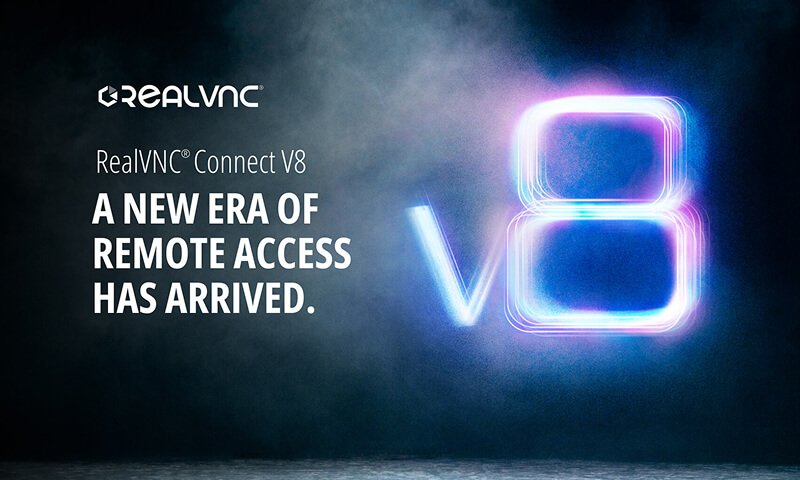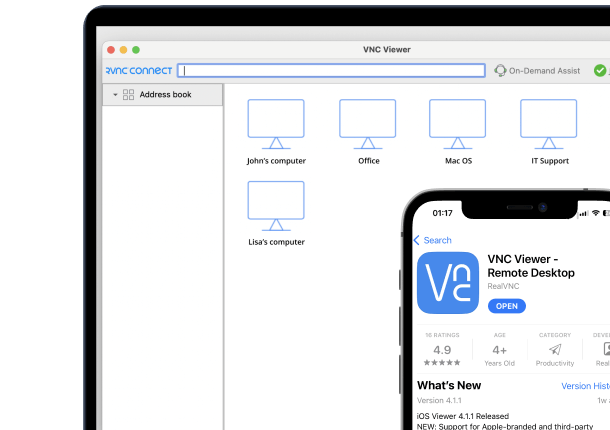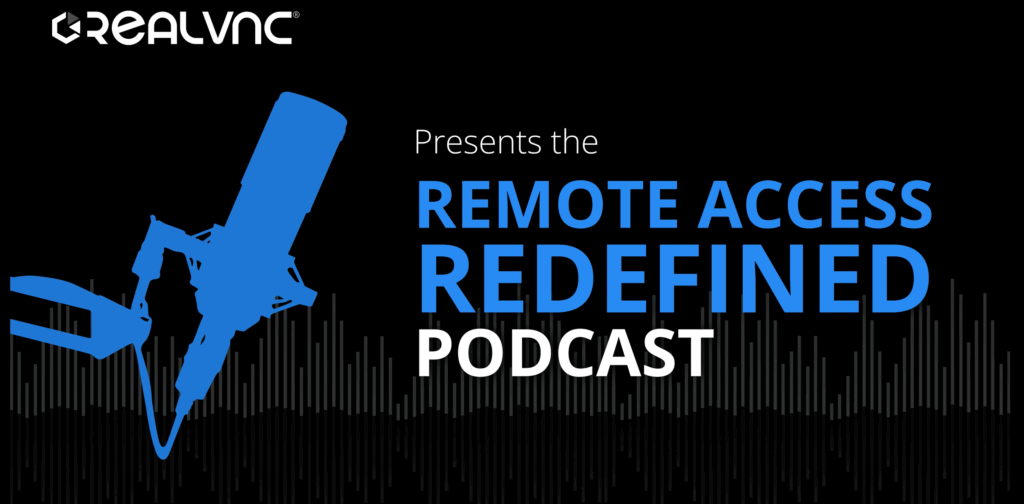The traditional classroom feels as though it has become obsolete, and it is no surprise as to why this perception is gaining traction. It is thought that nearly 60 million learners will be using online education by 2027, and it is projected that over 2,700 education technology tools are already being used per school district in the U.S. alone. This puts learners without access to new technologies at an even greater disadvantage. How quickly schools can adapt before they’re left behind in the education sector?
Digital transformation in education is when you merge digital technologies into every aspect of educational institutions like schools or colleges. It changes how students learn, teachers instruct, and administrators manage educational systems. There is more to it that than adding computers to classrooms though. It is reshaping the entire educational system to use technology to get better learning results.
Successful digital transformation in education is not just about technology, it also involves having secure, reliable infrastructure to support these new ways of learning. Solutions like RealVNC Connect v8 give educational institutions secure remote access capabilities that they need to manage IT systems across campuses, while making sure that digital learning environments stay online and secure for both students and teachers.
What is Digital Transformation in Education?
Defining Digital Transformation in Education
Digital transformation in education is different from traditional teaching methods. It focuses on technology in learning environments, and it reshapes how educational institutions are run. The delivery of learning content, and engagement with students is all handled online with advanced technological solutions. Digital transformation in education uses software applications and web-based technology to help educators to plan, execute and inspect their learning processes.
Education digital transformation in covers so many different moving parts that all work together that it can be daunting at first. Learning management systems are digital platforms that manage every stage of the learning process. They cover everything from planning and delivering educational content to track student progress and monitor results.
Digital transformation in education gives us remote access to educational resources as the student facing services, which include online lessons, interactive simulations, and real time communication with educators and peers. Cloud solutions give us scalable infrastructure on the backend for storing and accessing digital learning materials.
Digital collaboration tools give us real-time communication between students and teachers, which does away with many of the problems that traditional distance learning has to deal with. Through the digital transformation process, learners are coming online and receiving quality digital education.
Traditional vs. Digital Learning Environments
Traditionally, education and learning relied on physical documents and in-person instruction. Manual administrative processes require physical marking and checking of paper based material, which takes up a lot of time. Brick and mortar schools don’t offer personalized learning experiences or ways to track student progress in real time, which is why digital based schooling is starting to gain a foot hold in education.
Digital transformation in education feels new, but you could argue that it already started decades ago, well before our current digital age. The earliest teaching machines first showed up in 1924, but modern digital transformation only really started with networked learning systems like PLATO in the 1970s.
Key Impacts on Learning
Today’s digital education works very differently to traditional schooling, which is made possible through the digital transformation process. Digital tools make it easier to personalize learning for students, and it makes education more effective.
Online learning lets learners enlarge font sizes, turn on closed captions, or watch videos at faster speeds. Students can also access content anytime, from anywhere. The same is true for teachers, who can access student analytics to understand how they learn and where they need extra support.
The impact of digital transformation in education is most noticeable across three main areas:
- Efficiency: Efficiency increases thanks to administrative tasks being automated and streamlined. Paperwork is a thing of the past thanks to integrated systems and automated workflows.
- Engagement: Student engagement increases thanks to content that students interact with, gamification in lessons, and personalized learning paths that can adapt to the individual.
- Accessibility: Digital platforms remove geographical and physical barriers, allowing students in remote areas to access the same quality education as those in major cities.
Digital transformation in education needs secure infrastructure that can manage many different IT systems. This is where remote access solutions are non negotiable, giving administrators the tools that they need to maintain and troubleshoot issues while keeping education accessible and secure across multiple locations. Remote access is one of the most important features of digital transformation process in education.
Key Drivers of Digital Transformation
Digital transformation in education has changed education. The online education market is expected to reach $185.20 billion in 2025, growing at 8.56% annually. The e-learning industry has grown 900% since 2000. It’s more than integrating technology or technological adoption. Student preferences have changed, many prefer to learn electronically when they are given the choice between online studying and traditional schooling.
Blended learning was valued at $22.3 billion in 2023, and is projected to reach $49.6 billion by 2032, with 72% of U.S. public schools rolling out blended learning strategies. This combines the best of both worlds, and gives students face-to-face interaction and accessing digital resources that personalize their learning experience at the same time.
The flexibility of online learning platforms is very valuable, allowing students to learn on their own schedules, and at their own pace. Teachers track progress and find areas where extra support is needed in digital transformation.
Technological Advancements
Three key technologies are driving unprecedented change in education.
- Cloud computing: provides scalable infrastructure that educational institutions need to support digital transformation in education. The worldwide public cloud services market is forecast to grow by 14.1% from 2023 to 2030, enabling schools to access powerful computing resources without massive upfront investments.
- Artificial intelligence: changes how personalized learning happens through digital transformation in education. The AI in education market is estimated to grow at a CAGR of 37.2% between 2024 and 2032, with 97% of education leaders seeing benefits in how AI can positively impact education. These intelligent systems adapt content to individual learning styles and provide real-time feedback to both students and teachers.
- Internet of Things technology: connects educational environments in new ways. With 64 billion IoT devices expected by 2025, schools can monitor everything from energy usage to air quality, while creating smart classroom environments that respond to student needs automatically including learning materials.
Cost and Resource Optimization
Educational institutions are under pressure to do more with less. Digital transformation in education offers solutions to this constant struggle. Online learning requires 40% to 60% less time than traditional learning methods, and companies with extensive e-learning training generate 218% higher revenue per employee. These efficiency gains translate directly to cost savings and improved resource allocation.
Cloud solutions get rid of the need for on-premise hardware that is very expensive, while still giving access to state of the art tools that would normally be unaffordable for many institutions.
Security Demands
Digital learning creates new security problems that need more advanced cybersecurity solutions. Confidential student records are accessible across networks and devices, so educational resources need strong cybersecurity. Data security is still the highest priority as cloud adoption is on the rise, with many providers giving advanced encryption and multi-factor authentication as standard features to their customers.
Benefits of Digital Transformation in Education
Digital transformation in education creates more dynamic and personalized learning experiences that capture and hold student attention. Students that have access to personalized learning programs score 30% higher on standardized tests compared to physical classrooms.
Online education stats show that 75% of students feel engaged versus only 30% in traditional classrooms. Digital transformation in education offers learning paths that are adaptable, and adjust to individual student needs and learning styles. They key concepts remain the same, and cater for all levels of schooling, from grade school to higher education.
25% of educators that use AI report benefits in learning assistance, and 18% see improved student engagement, with 17% noticing better learning outcomes. Interactive content, virtual reality experiences, and gamification changes passive learning into active participation.
Collaborative tools allow students to work together on projects no matter where they are. This helps with building teamwork skills and maintaining engagement, which is important for students that are isolated from one another.
Improved Operational Efficiency
Administrative processes become streamlined through automation and digital workflows. Research in public schools reveals strong agreement on the positive influence of digital tools on administrative processes. Digital transformation improves administrative work.
Tasks that used to need manual intervention like student enrollment or paper grading now happen automatically. This frees staff to focus on more valuable pursuits. Document sharing in the digital age is standard practice and should be embraced where possible as it fosters collaboration.
Digital transformation provides better operational efficiency by streamlining workflows, automating processes, and optimizing operations, leading to reduced costs and minimized inefficiencies. Resource management becomes more strategic when institutions can track usage patterns and adjust allocations based on real-time data rather than historical assumptions.
Expanding Access
Digital platforms break down geographical and physical barriers to education. Remote learning capabilities mean students in underserved areas can access the same quality education as those in urban centers thanks to new developments like interacting simulations. Cloud-based learning materials eliminate the need for expensive textbooks and physical resources, making education more affordable and accessible.
Online learning platforms accommodate different learning styles and schedules, enabling working adults and non-traditional students to pursue education. Digital tools also improve accessibility for students with disabilities through features like closed captioning, text-to-speech, and customizable interfaces that adapt to individual needs.
Data-Driven Insights
Educational analytics transform decision-making from intuition-based to evidence-based. Institutions can track how different students engage with course materials in near real-time, creating personal learning data graphs that inform customized educational approaches . Teachers gain detailed insights into student progress, identifying areas where additional support is needed before problems become critical. It also allows for more nuanced methods that support teaching.
Performance tracking enables curriculum adjustments based on actual learning outcomes rather than assumptions. Administrators can make better decisions about resource allocation, staffing needs, and program effectiveness using comprehensive data analysis. Predictive analytics help identify students at risk of dropping out, enabling proactive interventions that improve retention rates.
The digital transformation process requires secure, reliable infrastructure to manage IT systems across educational environments. Remote access solutions make complex digital ecosystems easier to maintain. This guarantees that integrating technology stays operational and secure across all institutional locations.
Challenges in Adopting Digital Transformation
Despite its potential benefits, digital transformation in education faces significant obstacles that education must overcome to succeed in their modernization efforts.
Infrastructure Limitations
The digital divide between rural and urban areas represents one of the most persistent challenges. Rural areas often lack digital infrastructure such as internet connectivity, computers, and other learning-support devices, leading to students being unable to access modern educational technologies and causing inequality in learning opportunities.
Many schools in remote and rural areas still lack proper electrical connections and face challenges accessing reliable power, while budget constraints limit funding for computers, internet connectivity, and infrastructure improvements. These challenges slow down digital transformation in education, but they are not insurmountable.
Today 3.6 billion people still have no access to the Internet, and the COVID-19 pandemic forced 94 percent of learners worldwide to continue their education at home, regardless of whether they had connectivity and safe internet access to digital education.
This infrastructure gap creates a two-tier education system where urban students gain access to advanced digital learning tools while rural students remain limited to traditional methods due to a lack of digital transformation.
Skill Gaps
The transition from physical documents to digital education requires an training overhaul on educators and administrators. It is essential to provide digital skills training for teachers and students to ensure everyone can access and take advantage of the opportunities that technology brings. Many educators feel overwhelmed by the pace of technological change and lack confidence in using new digital tools effectively, making administrative tasks more difficult to undertake.
Issues related to teacher training, digital literacy, process documentation, and the equitable distribution of technology resources remain prevalent challenges in integrating technology effectively. The skill gap extends beyond basic computer literacy into curriculum design and student assessment methods.
Security Concerns
Digital learning environments create new vulnerabilities for student data. Many schools and educational organizations do not have strong enough cybersecurity systems to protect student and teacher data, with cybersecurity breaches causing significant damage financially and to institutional reputation.
Educators have to balance accessibility with security, making sure that digital platforms are user-friendly while protecting private information. Digital skills in the education sector have become almost as important as the teaching aspects of the job, which is why enhanced teaching methods are so important.
Digital technologies raise data privacy concerns, which extend to student records, learning analytics, and communication systems. Schools need proper security protocols, staff training on data protection, and regular system updates to maintain secure digital environments.
Resistance to Change
Cultural barriers often prove more challenging than technical ones. Digital transformation requires changes in thinking and teaching methods, which may lead to resistance from both teachers and students. Some teachers worry about technology replacing their roles and teaching methods, or feeling uncomfortable using digital tools. Addressing resistance to change requires effective communication to demonstrate the benefits of digital transformation.
Digital transformation requires significant investment not only in purchasing equipment but also in maintaining and upgrading systems, with costs for maintaining and updating technologies being substantial as digital systems need frequent upgrades.
Remote access solutions play a critical role in this process, enabling IT teams to manage and maintain digital learning systems across multiple locations while ensuring consistent, secure access to education for all users.
Role of Technology in Digital Transformation
Technology serves as the backbone of educational digital transformation, enabling institutions to create more flexible, intelligent, and accessible environments through several key innovations.
Cloud and Mobility
Cloud computing provides the foundation for scalable educational infrastructure. Cloud Computing can help enhance accessibility and scalability of education system resources by giving students and teachers with anytime, anywhere, and any device access to learning resources and tools.
Educators can expand their digital teaching capacity without massive upfront investments in hardware, while students and teachers gain the flexibility to access learning materials from any location.
The on-demand nature of the cloud makes accessibility at any given time and on any device possible, with seamless mobility of data from multiple devices into a single server, streamlining storage, analysis, and overview.
This mobility transforms traditional classroom boundaries, enabling remote learning, hybrid education models, and personalized learning experiences with new teaching methods that adapt to individual schedules and preferences.
IoT and Smart Devices
Smart classroom technologies create responsive environments through interconnected devices. The scalability of cloud IoT platforms enables large-scale data processing, analytics, and artificial intelligence, with millions of sensors used by today’s infrastructure systems. Educational IoT applications range from smart whiteboards and environmental sensors to attendance tracking and security systems.
IoT devices such as smart thermostats, lighting systems, security cameras, and appliances are integrated via cloud platforms, allowing management remotely through mobile apps. In educational settings, these technologies optimize energy usage, monitor air quality for healthier environments, and provide real-time data on classroom utilization and resource needs.
AI for Personalization
Artificial intelligence transforms how educational content adapts to individual learners. AI can help create customized online learning paths for each student based on their abilities, preferences, and goals. Machine learning algorithms analyze patterns to recommend specific learning resources, identify knowledge gaps, and adjust difficulty levels in real-time.
AI-powered educational tools provide immediate feedback, automate administrative tasks like grading, and enable predictive analytics that help educators intervene before students fall behind. This personalization extends beyond content delivery to include assessment methods, pacing, and online learning that matches individual students.
Remote Access Solutions
Secure remote access forms the critical infrastructure that enables distributed digital environments. Educational institutions require robust solutions to manage IT systems across multiple locations, troubleshoot technical issues promptly, and ensure consistent access to digital resources.
RealVNC Connect v8 addresses these challenges by providing secure, reliable remote access that enables IT administrators to maintain and support infrastructure from anywhere. This capability becomes essential when managing distributed environments, conducting system updates across multiple campuses, and providing technical support without requiring physical presence.
The platform’s security features protect sensitive educational data while enabling seamless connectivity between administrators and the systems they manage. Whether troubleshooting classroom technology, updating learning management systems, or configuring network resources, RealVNC Connect ensures that technical support doesn’t become a barrier to educational innovation.
This foundation of reliable remote access enables educational institutions to focus towards online learning outcomes while maintaining the sophisticated digital infrastructure that digital transformation in education needs.
RealVNC Connect: A Critical Enabler
RealVNC Connect serves as a comprehensive remote access solution that bridges the gap between distributed educational infrastructure and centralized IT management. The platform enables secure, real-time connections to computers, servers, and digital technologies across educational networks.
It provides IT administrators with complete visibility and control over their digital environments. Whether managing classroom computers, server infrastructure, or specialized educational software, RealVNC Connect transforms how educational institutions approach IT support and system administration.
Remote Management
Educational IT teams face unique challenges managing technology across multiple buildings, campuses, and online learning. RealVNC Connect eliminates the need for physical presence by enabling administrators to troubleshoot technical issues, install software updates, and configure systems from any location.
IT staff can resolve classroom technology problems during off-hours, deploy educational software simultaneously across hundreds of devices, and perform routine maintenance without disrupting learning activities. This remote capability significantly reduces response times and ensures that technical issues don’t interfere with educational delivery.
Security Features
Security is a critical concern around digital technologies in educational environments handling sensitive student information. RealVNC Connect implements enterprise-grade encryption to protect all remote connections, ensuring that data transmission remains secure across networks.
Multi-factor authentication provides additional protection by requiring verified credentials before granting system access. Role-based access controls allow institutions to define precisely which team members can access specific systems, creating granular security policies that align with organizational requirements and compliance standards.
Real-World Integration
Educational institutions implementing RealVNC Connect might deploy the solution across their computer labs, enabling IT teams to remotely assist students with software issues during classes. A school district could use the platform to manage educational software installations across multiple campuses from a central location, reducing deployment time from weeks to hours.
Universities might leverage RealVNC Connect to provide technical support for faculty conducting online classes, ensuring that remote learning technology functions smoothly without requiring on-site intervention. These applications demonstrate how secure remote access becomes essential infrastructure supporting modern educational delivery.
Future Trends in Digital Transformation
The evolution of education continues accelerating with the digital transformation process, requiring a mix of digital skills and updated learning materials. There are a few important trends that have emerged that show how institutions deliver learning experiences and enhancing teaching.
They work together and help manage educational operations with digital transformation that blends traditional learning with virtual classrooms and online assessments. Below are some of the exiting developments that are being used currently.
AI-Driven Learning
Machine learning algorithms revolutionize personalized education by creating dynamic learning paths that adapt to individual student needs. AI-based tutors provide interactive learning content, give instant feedback, and recommend study plan adjustments based on a person’s goals.
Learner knowledge and learning preferences also play a large role, emphasizing skills that require the most attention. These systems analyze student performance patterns in real-time, identifying knowledge gaps and adjusting content difficulty automatically.
AI-powered tools enhance learning experiences and digital transformation through platforms like ChatGPT and Squirrel AI, which give students real-time tutoring. Learning analytics platforms are useful for predicting student performance, and adaptive assessments that adjust difficulty based on student proficiency are another new development in digital transformation.
Remote desktop solutions help schools to move beyond one-size-fits-all approaches toward truly individualized instruction that maximizes each student’s potential with personalized learning paths.
Virtual and Augmented Reality
Immersive technologies transform abstract concepts into tangible experiences. Virtual field trips allow students to visit historical sites, museums, and even outer space without leaving classrooms, while AR and VR help medical students practice surgeries and complex procedures safely.
These technologies address different learning styles by providing visual, auditory, and kinesthetic learning opportunities simultaneously. This creates wonderful opportunities for better outcomes that prepare students for the workplace.
Online schools are implementing VR and AR for STEM subjects, enabling students to conduct virtual experiments, explore molecular structures, and visualize complex mathematical concepts in virtual classrooms.
This hands-on approach enhances engagement and retention while eliminating safety concerns associated with traditional laboratory work, allowing students to learn key concepts while validating their skills through online assessments.
Predictive Analytics
Digital transformation allows for data collection and data analytics to be used in the classroom. Having the right data gives you all the information you need to improve learner outcomes. Educational analytics platforms analyze patterns in student behavior, attendance, and performance to predict which students might struggle or drop out. This early warning capability allows educators to provide targeted support before problems become critical, significantly improving retention rates and academic outcomes.
Predictive analytics also optimize resource allocation, helping institutions forecast enrollment trends, staffing needs, and infrastructure requirements. Schools can make informed decisions about course offerings, facility usage, and budget planning based on data analytics rather than historical assumptions.
Increased Demand for Secure Remote Access
Digital ecosystems continue expanding across online schools, creating growing demands for reliable remote management capabilities. As schools implement more sophisticated technology infrastructure, IT teams require secure access to manage systems across distributed campuses, troubleshoot issues remotely, and maintain consistent service levels so that students learn without behaving their lessons disturbed.
Tools like RealVNC Connect are essential infrastructure in digital transformation as hybrid learning models are adopted, management systems allow administrators to manage cloud-based resources, and support increasingly complex digital environments.
The ability to securely access and manage education from anywhere means that technical challenges don’t disrupt learning activities, making remote access solutions indispensable components of modern educational infrastructure. Remote access is critical as part of a digital transformation in education strategy.
How to Implement Digital Transformation in Education
Assessment
Begin digital transformation by conducting a comprehensive audit of existing infrastructure, identifying gaps between current capabilities and educational goals. Evaluate network capacity, device availability, software licensing, and staff technical competencies across all educational locations.
Document hardware age, connectivity speeds, security protocols, and user access patterns to establish baseline metrics. Survey educators and students about their technology experiences, pain points, and desired improvements. This assessment reveals priority areas requiring immediate attention and helps establish realistic timelines for transformation initiatives for education digital transformation.
Roadmap Creation
Develop a phased implementation strategy of digital transformation that aligns technology deployment with educational objectives and budget constraints. Phase one might focus on basic infrastructure upgrades like network improvements and device standardization, which secures student data when implemented correctly.
Phase two could introduce learning management systems and digital learning platforms. Phase three might implement advanced technologies like AI-powered learning analytics and immersive learning tools. Each phase should include clear milestones, success metrics, and contingency plans. Prioritize initiatives that deliver immediate value while building foundations for future capabilities.
Training and Support with Digital Technologies
Successful digital transformation depends on comprehensive professional development programs. Provide educators with hands-on training sessions covering new educational technologies, pedagogical approaches for digital learning, and basic troubleshooting skills.
Encourage upskilling and mentoring between teachers with more technical know how and colleagues that need additional support. Establish ongoing support channels including help desks, online resources, and peer learning communities. IT staff requires training on new systems, security protocols, and remote management tools to maintain increasingly complex digital infrastructure.
Integration of Secured Remote Access
Implement secure remote access solutions early in digital transformation in education processes to ensure seamless system management throughout the transition. RealVNC Connect enables IT teams to configure new systems, troubleshoot deployment issues, and provide support without physical presence at each location.
Remote access tools reduce implementation timelines by allowing simultaneous configuration across multiple sites while maintaining data security standards. The ability to remotely manage resources ensures that transformation initiatives proceed smoothly without disrupting ongoing educational activities, making secure remote access a foundation for successful digital transformation rather than an afterthought.
Wrapping Up
Digital transformation in education is a seismic shift toward more accessible, personalized, and efficient learning environments. The benefits are clear: enhanced student engagement through AI learning, improved operational efficiency via automated admin processes, interactive simulations and virtual training.
It provides expanded access for diverse populations, and data analytics that optimize educational outcomes. However, challenges exist that affect how students learn, like infrastructure limitations in rural areas, skill gaps among educators, cybersecurity concerns, and resistance to organizational change. These are all bumps in the road that slow down the digital transformation process in higher education.
Technology serves as the catalyst for this transformation. Cloud computing provides scalable infrastructure, IoT devices create smart environments, and artificial intelligence enables adaptive educational experiences. These innovations need technological solutions, secure remote access solutions to manage distributed digital ecosystems effectively.
RealVNC Connect is critical enabler, providing IT teams with secure, reliable remote management capabilities essential for maintaining complex infrastructure. As institutions deploy learning management systems, digital collaboration tools, and smart classroom technologies across multiple locations. Add to this the ability to troubleshoot, configure, and maintain these systems remotely as the technology transforming education.
Frequently Asked Questions
What is digital transformation in education? Digital transformation in education is the comprehensive integration of digital technologies into all aspects of digital education, fundamentally changing how students learn, teachers instruct, and administrators manage operations. It involves replacing traditional methods with technology-enabled methods that improve learning outcomes and operational efficiency.
How does digital transformation enhance student learning? Digital transformation improves learning through AI-driven adaptive systems, increases engagement via interactive content and gamification, and provides flexible access to education anytime, anywhere. Students benefit from customized learning paths, immediate feedback, and collaborative tools that accommodate different learning styles and paces.
What challenges do schools face during digital transformation? Major challenges include infrastructure limitations in rural areas, insufficient internet connectivity, skill gaps among educators requiring extensive training, cybersecurity and data security concerns protecting sensitive student data, budget constraints, and resistance to change from staff accustomed to traditional teaching methods.
How does RealVNC Connect support educational IT infrastructure? RealVNC Connect enables IT teams to remotely manage, troubleshoot, and maintain educational resources across multiple locations. It provides secure access to classroom computers, servers, and learning systems, reducing response times and ensuring consistent technical support without requiring physical presence at each site.
What future trends will impact digital transformation in education? Key trends include AI assisted learning paths, immersive virtual reality and augmented reality educational experiences, predictive analytics for student success, and increased demand for secure remote access solutions as digital ecosystems expand.





